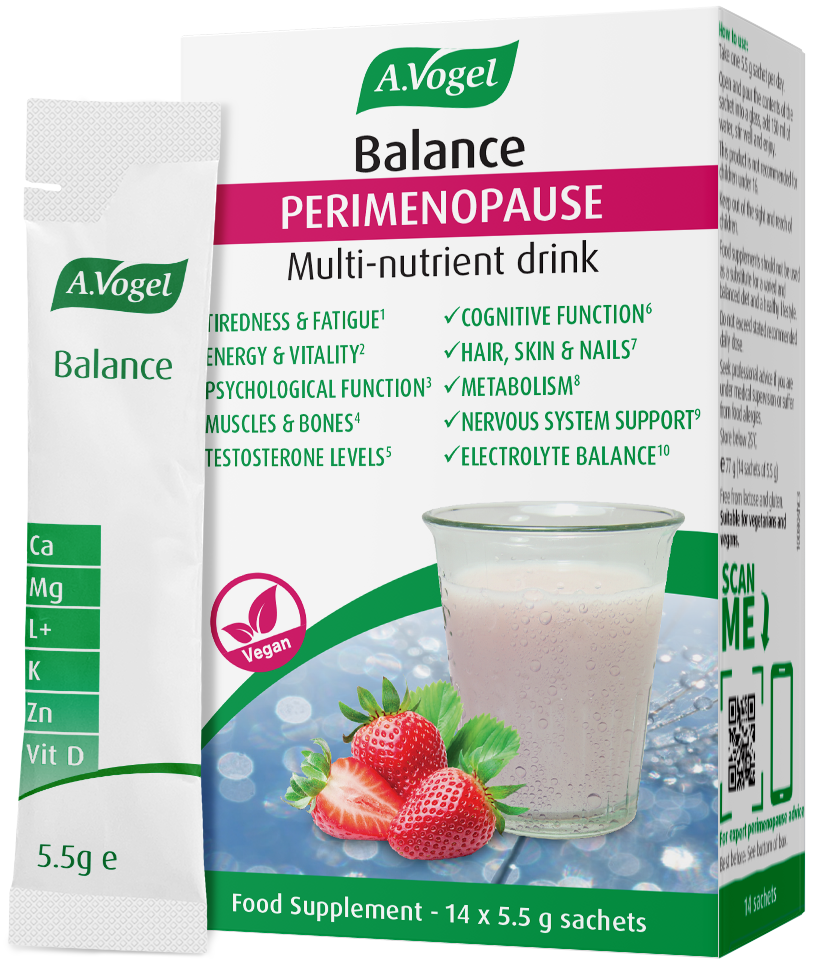Testosterone & the hormone balance during perimenopause
Young women produce more testosterone than men, but primarily we use it to make more oestrogen. It peaks in the cycle when we're ovulating and this can make us feel sexy and energised. As we get older, levels of testosterone gradually fall and less of it converts to oestrogen, which we need for bone, muscle, fertility, sex drive, energy and more.
Perimenopause is the transition into menopause and lower hormone levels, including lower testosterone. So, lower oestrogen and less conversion of oestrogen from testosterone, and the potential for symptoms such as tiredness, fatigue and a flagging libido. Muscles can also become a bit weaker and this can contribute to weight gain.
What can help?
To lessen perimenopause symptoms and help with testosterone production and its conversion to oestrogen, here are my 3 tips:
- Sleep well and try and manage the effects of stress to help your hormonal system to remain balanced.
- Get clever with your exercise. You want to prioritise strength training to maintain your lean muscle.
- Tweak your diet. Put more focus on protein, zinc, magnesium, B vitamins and good Omega oils. Eat more oily fish, avocado, nuts, seeds, and whole grains. You may also want to consider topping up with a multi-nutrient complex. One of my favourites is our Balance Perimenopause Multi-nutrient drink because it includes magnesium for energy and vitality, vitamin D and calcium which is supportive for our muscles and bones, and it’s got zinc, which contributes to the maintenance of normal testosterone levels in the blood.
A.Vogel Balance Perimenopause Supplement | Helps Support You in 10 Ways | One-a-Day | Strawberry Flavoured
£15.99 (77g (14 x 5.5g)) In Stock
You may also find these articles helpful:
How to help balance your hormones naturally during perimenopause
Hormonal changes in perimenopause and menopause: What you need to know
Surprising hormone disruptors to be aware of in perimenopause and menopause










